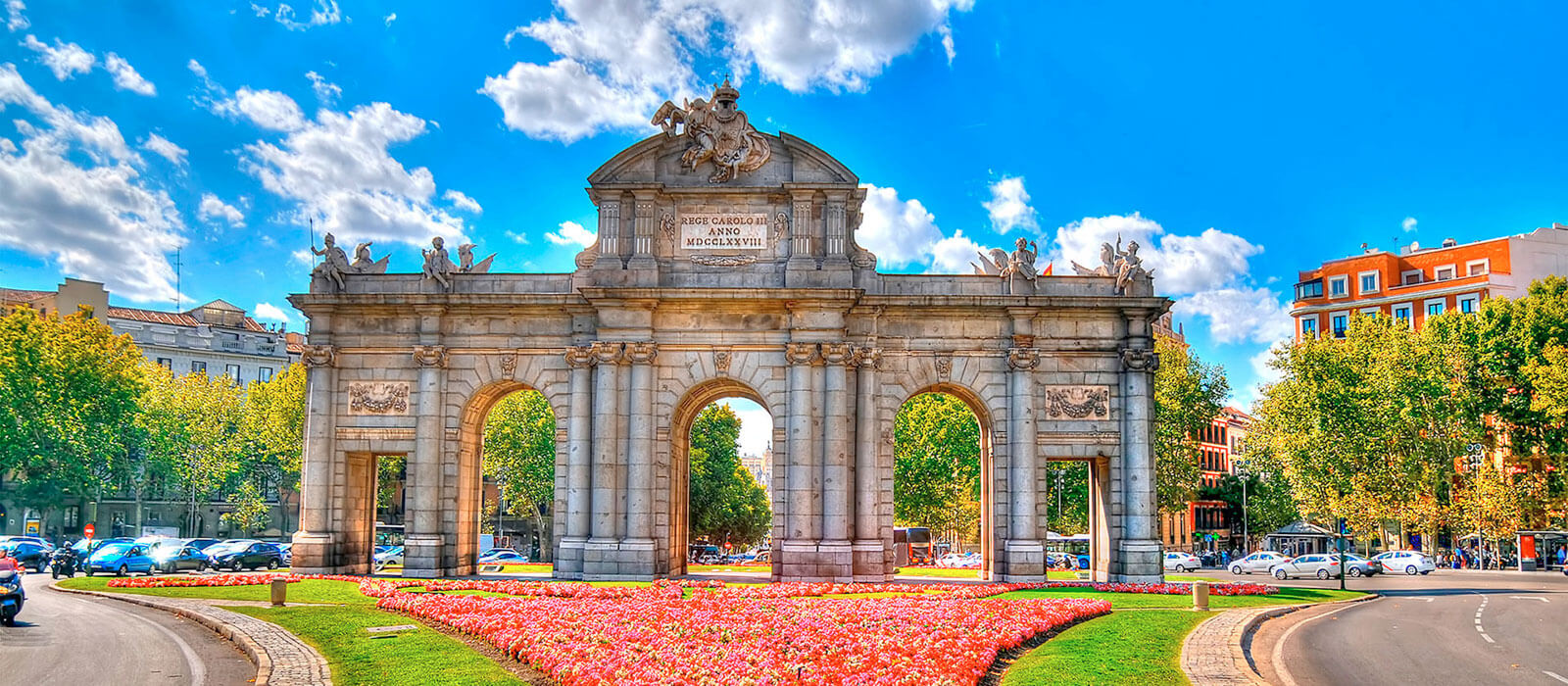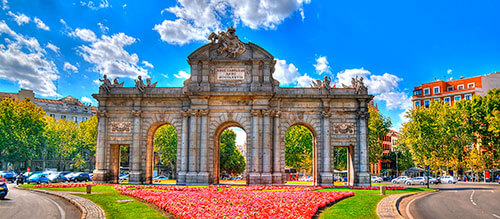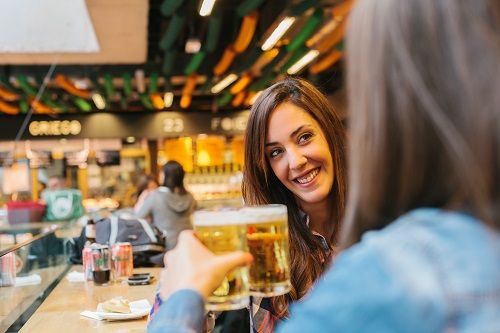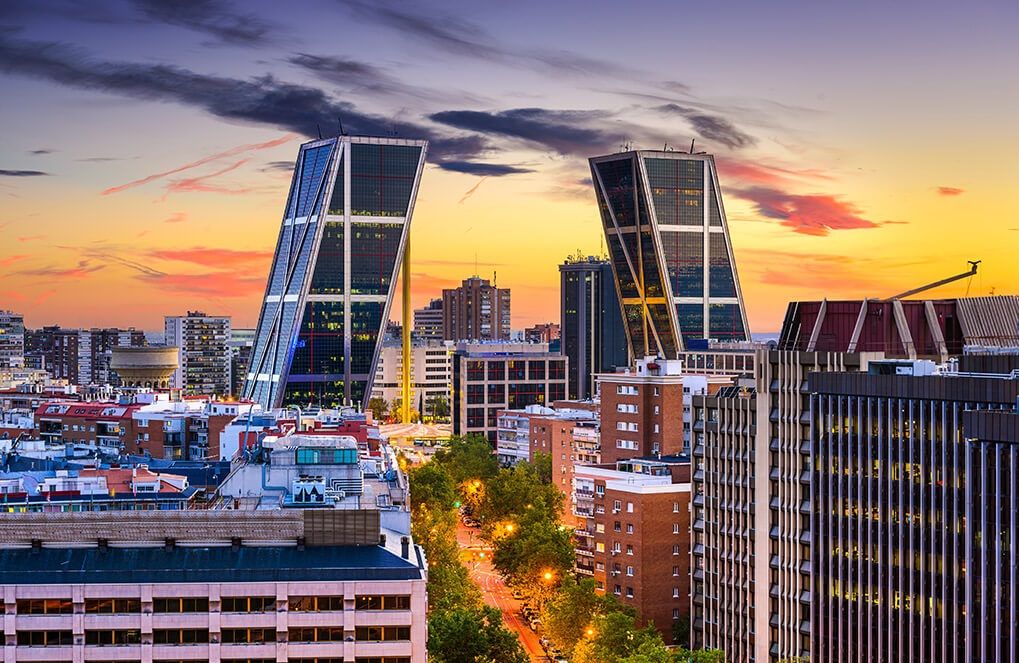Study abroad in Spain | Spanish study abroad programs
Study abroad in Spain. Discover the best places to study Spanish abroad and immerse yourself in the language to do Spanish language programs abroad.

Thinking of learning Spanish abroad? Spain is a perfect choice for you. Not only will you immerse yourself in Spanish, but you will also have the opportunity to explore a culture full of history, art, gastronomy, and a breathtaking variety of landscapes.
Fall in love with a new language, a unique culture and delicious Spanish food. Want to discover why everyone who comes to Spain stays? Discover it with don Quijote, and we'll introduce you to some of the best cities to study abroad in Spain. You'll want to stay and live there!
Madrid: the capital of Spain
One of the most popular destinations to learn Spanish abroad is Madrid. As the capital city, it offers many high-quality institutions offering Spanish courses abroad. The city boasts prestigious academies, universities and the best study abroad programs in Spain! The Spanish language programs abroad are designed for students of all levels, from beginners to advanced.
In addition to its excellent educational institutions, Madrid offers a fascinating cultural environment. By studying here, you will have the opportunity to visit the famous Prado Museum, the Retiro Park and explore neighborhoods such as Malasaña and Lavapiés. Not to mention the most important thing: you will be able to practice Spanish in everyday life and immerse yourself in the local culture to live like a local.
The advantage of learning Spanish abroad in Madrid is that you will find Spanish widely understandable, and it will be very useful in any Spanish-speaking country. But you will also meet people from all over the world, since people from all over the world live in Madrid: Mexico, Argentina, Italy or France, all of them with their unique accent that will help you to improve yours.
Barcelona: Mediterranean charm with an international twist
Barcelona is another excellent choice for study abroad in Spain. With its beautiful modernist architecture, beaches and vibrant cultural scene, this city attracts students from all over the world. La Ciudad Condal is known for being very cosmopolitan, which makes it easy to meet people of different nationalities, perfect for those looking for a multicultural experience while learning Spanish abroad.
There are numerous Spanish study abroad programs in Barcelona, offering both Spanish classes and cultural activities to improve your understanding of the language. However, it is important to note that Catalan is also spoken here, which is enriching and will give you a broader perspective of the linguistic diversity in Spain. In addition, Barcelona is a modern and well-connected city, ideal for exploring other regions of the country during the weekends, or even neighboring countries such as France.
Granada: the perfect combination
Granada is a jewel that few know about, but if you are looking to learn Spanish abroad, you will find a more traditional and relaxed atmosphere than in the big cities. This Andalusian city is famous for its rich history and mix of cultures, which is reflected in the impressive Alhambra, an architectural marvel from the Muslim era that is not to be missed.
One of the best study abroad programs in Spain you will find in Granada will be more affordable compared to other places, and daily life will also be more economical, something that may be attractive to students on a budget.
Another advantage of studying abroad in Granada is its student atmosphere, as it is home to a large university population, which makes it easy to integrate and practice Spanish with other young people daily. In addition, in Granada you will enjoy the free tapa, meaning that when you order a drink in a bar, you will receive a free tapa, an excellent opportunity to practice Spanish in the local bars and taverns!
Salamanca: a university city
If you are looking for a destination that breathes academic atmosphere, Salamanca is your ideal place to study Spanish abroad. This small city in Castilla y León is home to one of the oldest and most prestigious universities in Europe, founded in 1218: the University of Salamanca. For this reason, Salamanca has a strong and deep educational tradition and welcomes thousands of students from all over the world every year.
The advantage of learning Spanish in Salamanca is that Spanish is spoken clearly, which is perfect for foreign students. There are numerous Spanish courses abroad in this city, many of them include cultural activities, excursions and workshops.
Salamanca is a safe, quiet and walkable city, making it an ideal destination for those looking for a safe and easily adaptable environment.
Seville: city of culture and tradition
Seville, capital of Andalusia, is a fascinating destination for studying abroad in Spain. With its warm climate, Moorish architecture and festive atmosphere, Seville is a city that invites you to discover the essence of Spain. Here you can find several Spanish study abroad programs, ranging from intensive courses to summer programs, ideal for quickly improving your language skills.
Studying in Seville also allows you to enjoy Andalusian traditions, such as flamenco or Semana Santa, and you will be able to experience first-hand the hospitality of Seville. Learning Spanish in Seville is to immerse yourself in a passionate and dynamic culture that will enrich your learning experience.
Most of these cities are perfect for studying Spanish abroad in Spain and living an enriching experience. Each city in Spain offers its own approach and advantages for those who wish to learn Spanish abroad. Opting for a Spanish course abroad will open doors in an increasingly globalized world and give you an invaluable cultural perspective. Choose your city and get ready to discover the best of Spain while mastering the Spanish language!






























